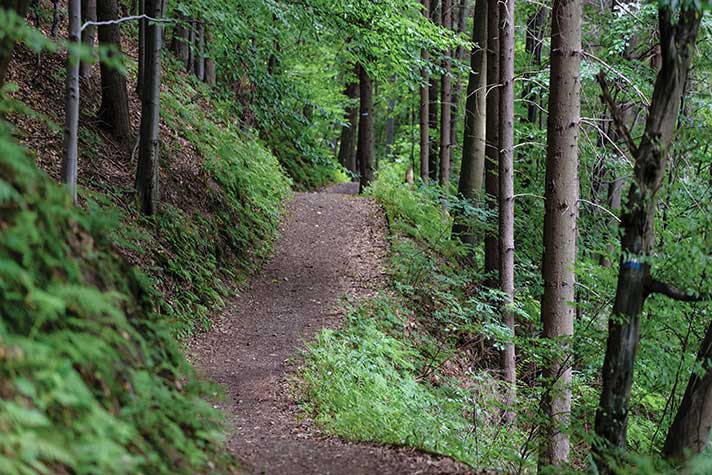Trail Talk – September 2022
Poison oak. An interesting plant. Actually, quite pretty, as plants go. Often sprouting brilliant scarlet and purple leaflets in the Spring, it matures to a rich verdant green as Summer arrives. The blossoms are quite delicate and even fragrant, attracting a multitude of pollinators, some as delicate as the smallest midge and others as striking as our beloved swallowtail butterfly. The leaves in their delicate state attract browsers, including black-tail deer, cottontail rabbits, and even the occasional domestic dog.
Where supporting trees and shrubs appear alongside, long runners climb, ivy-like, rooting into bark crevices, until the plant soars to heights of 30-40 feet, taller than a 3-story building. Ground runners can stretch for similar lengths, again rooting occasionally in rich pockets of soil, reaching vine-like lengths to snag the ankles of unsuspecting hikers. On open hillsides, poison oak can rise in thick clumps, often creating shrubs 20 feet high and 10 feet in diameter. Many birds nest in these thickets, where insect life is abundant, and safety from predators is a given.
As summer approaches Fall, and soil moisture becomes rare, the plant begins to prepare for hibernation. A perennial forb, as days shorten, the plant sends its chlorophyll chasing the summer sugars it has produced deep into its remarkable maze of roots. The leaves again turn bright shades of crimson and regal purple, and miniature seeds appear in little balls that resemble tiny white pumpkins. Related to cashews, the seeds themselves actually appear to be small nuts, though hardly something we’d find particularly enticing. Birds and rodents are hardly as picky, knowing the nutritious pod for the powerhouse of energy that it is.
“So, why,” one asks, “Does such a remarkable plant have to be such a nuisance?” And here, if you’ll pardon the ironic statement, is the rub. We humans seem to have an allergy to the oil found on the leaves, stems, and roots. Hardly a matter to take lightly, when so many are extremely allergic. Yet other animals, even our close cousins, cats and dogs, have no adverse reaction.
Needless to say, Jacksonville is at the heart of Oregon’s poison oak country. Yet due to the valiant efforts of our volunteer trail crews and Public Works employees, one can enjoy a large swath of our surrounding hills unconcerned with this “nuisance” plant. Weed whacking, done carefully, can keep it at bay. The downside is that often this approach also removes other, more favorable, plants. Many trailside flowers bloom at precisely the time of year that crews are most apt to control trailside poison oak. Spraying is also damaging to other plants.
In Forest Park, crews spend considerable time in summer simply grubbing the plant along the trails. While labor intensive, it is far friendlier to other vegetation. By making a couple of passes along the 40 miles or so of hiker and multi-use trails, our volunteers hope park visitors find their outings more pleasant, with the only itch post-trip being the itch to return.

 Trail Talk is a monthly column by Clayton Gillette about hiking the Jacksonville Woodlands trail system. For more information, please visit the Jacksonville Woodlands Association website at
Trail Talk is a monthly column by Clayton Gillette about hiking the Jacksonville Woodlands trail system. For more information, please visit the Jacksonville Woodlands Association website at